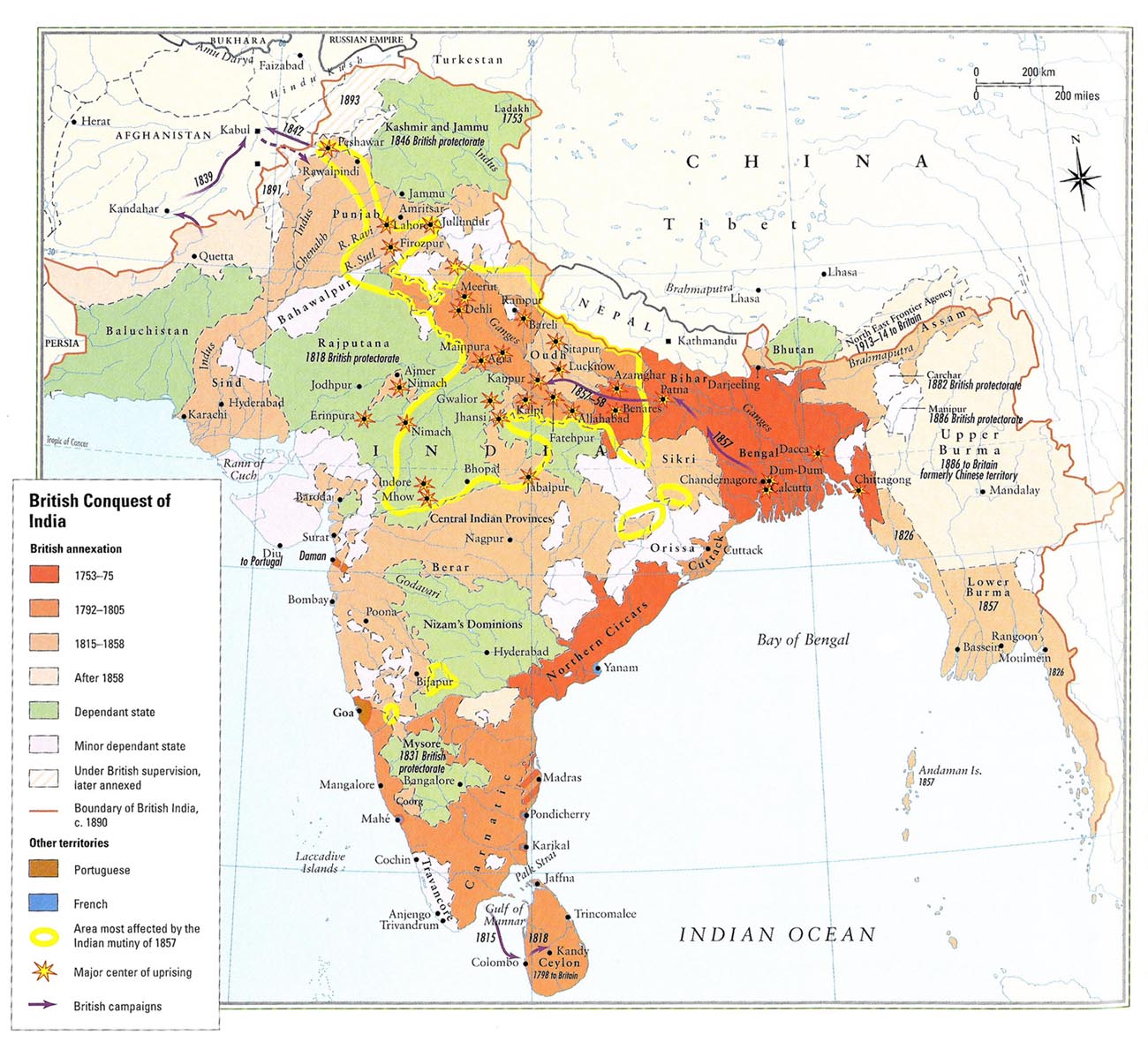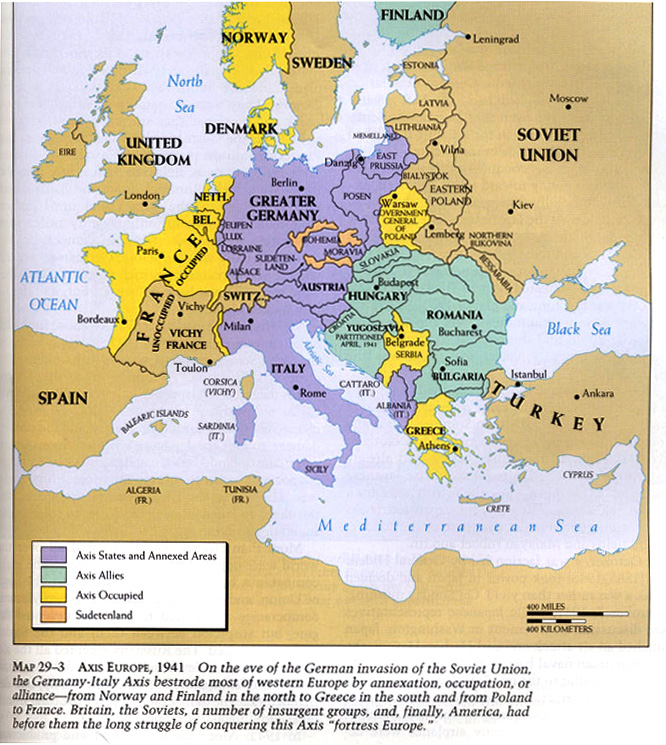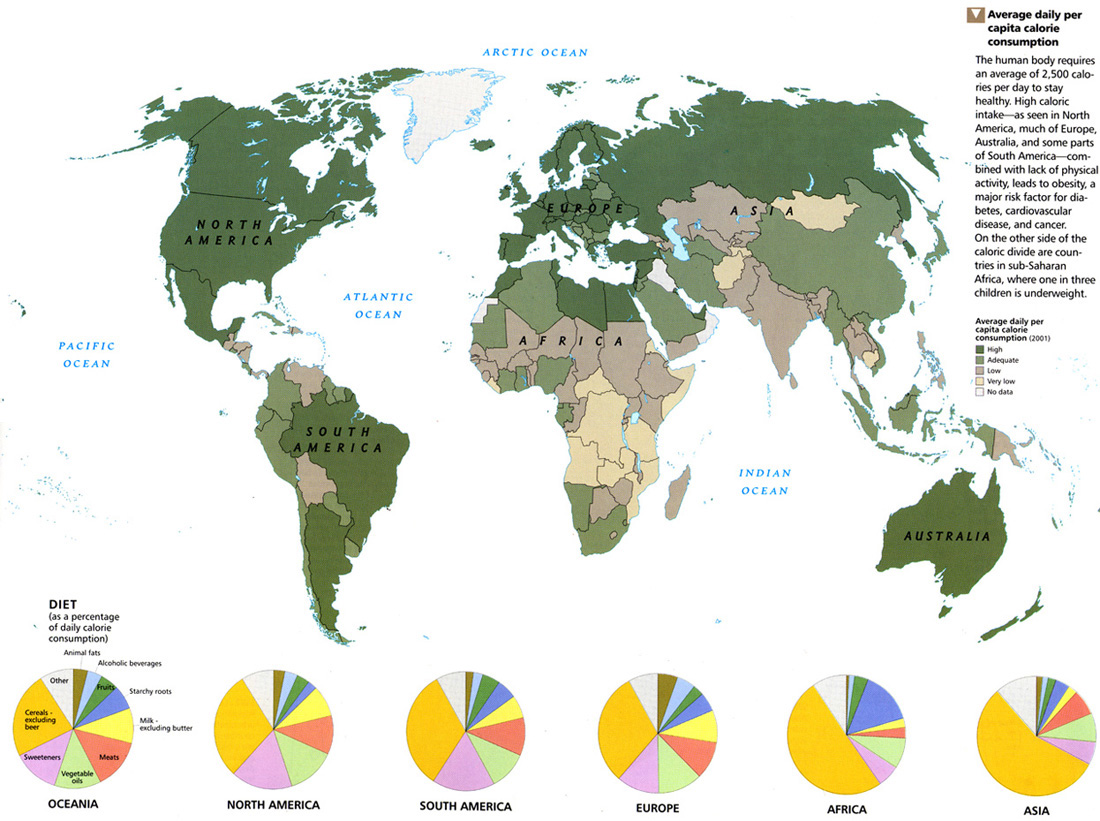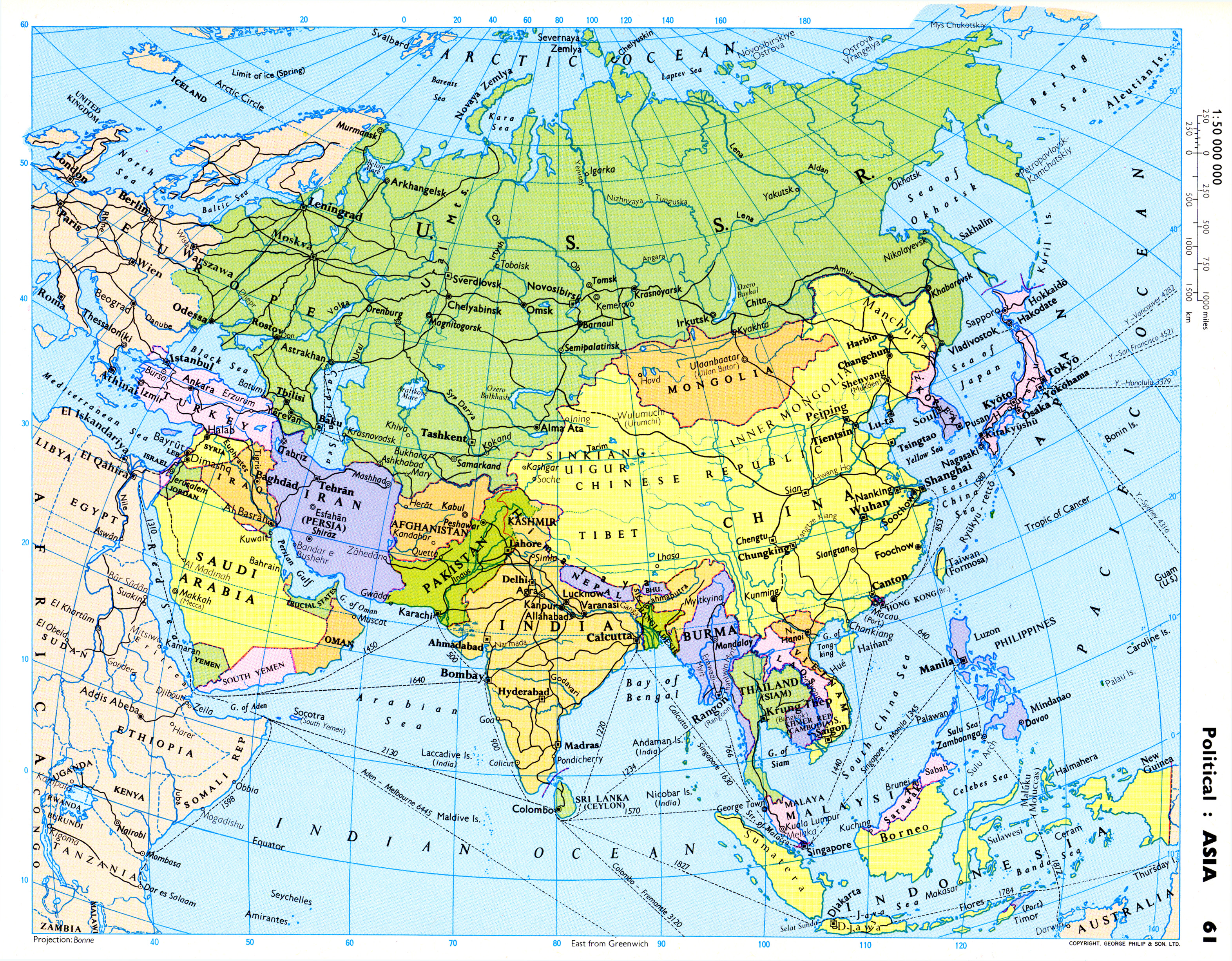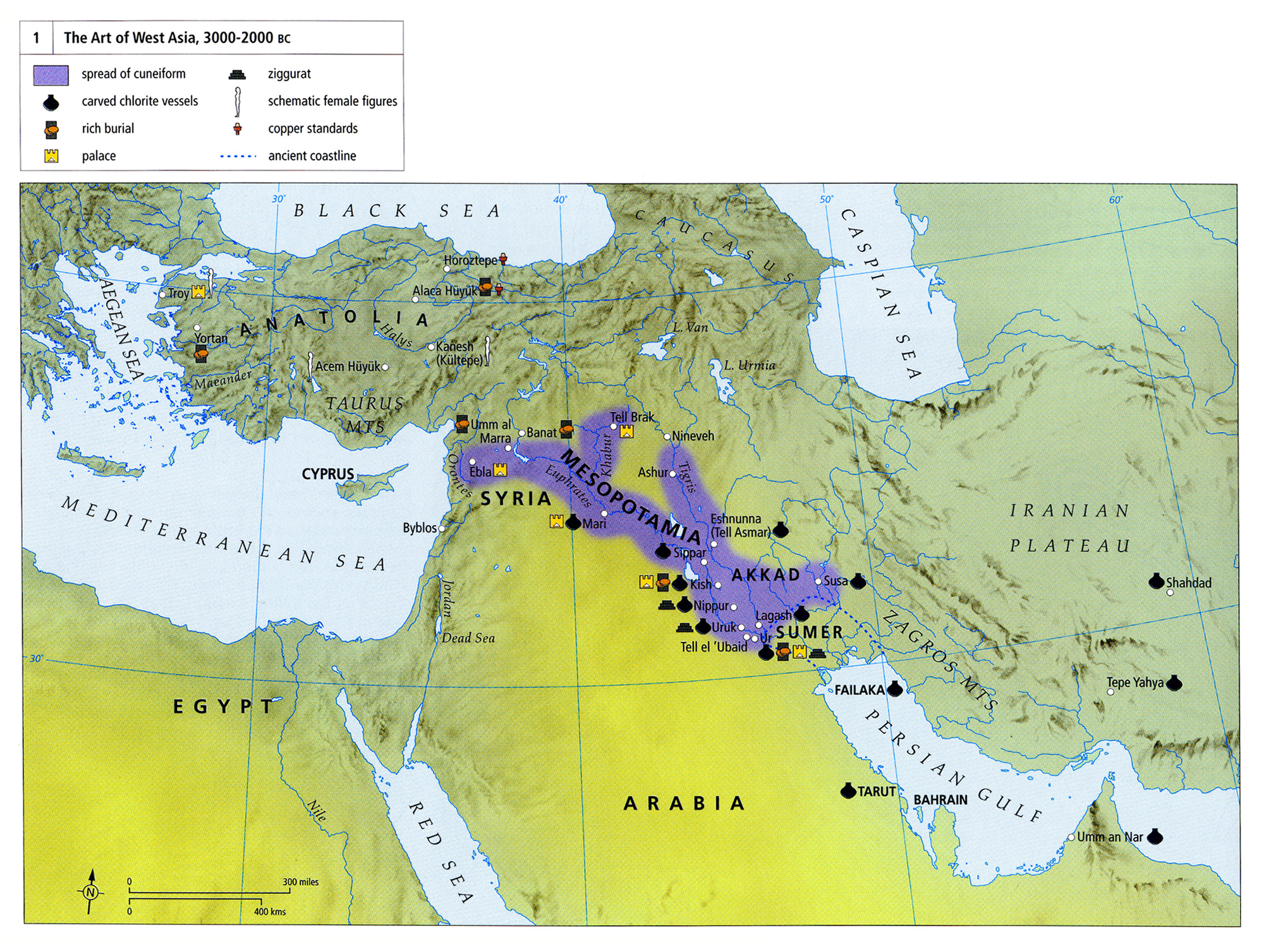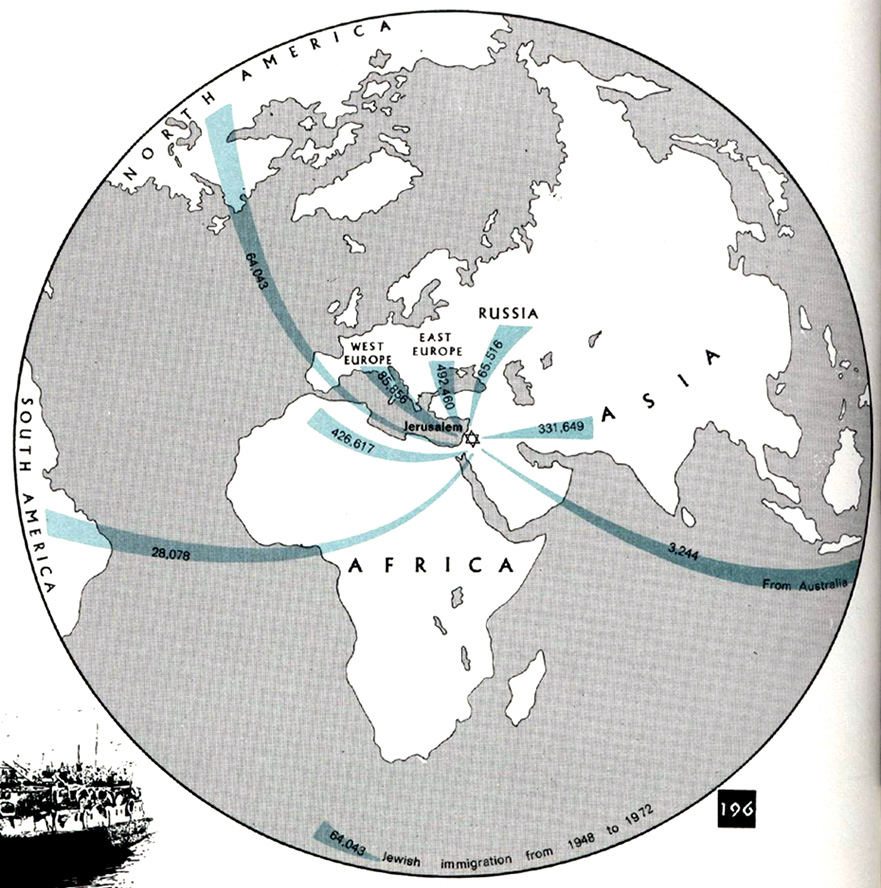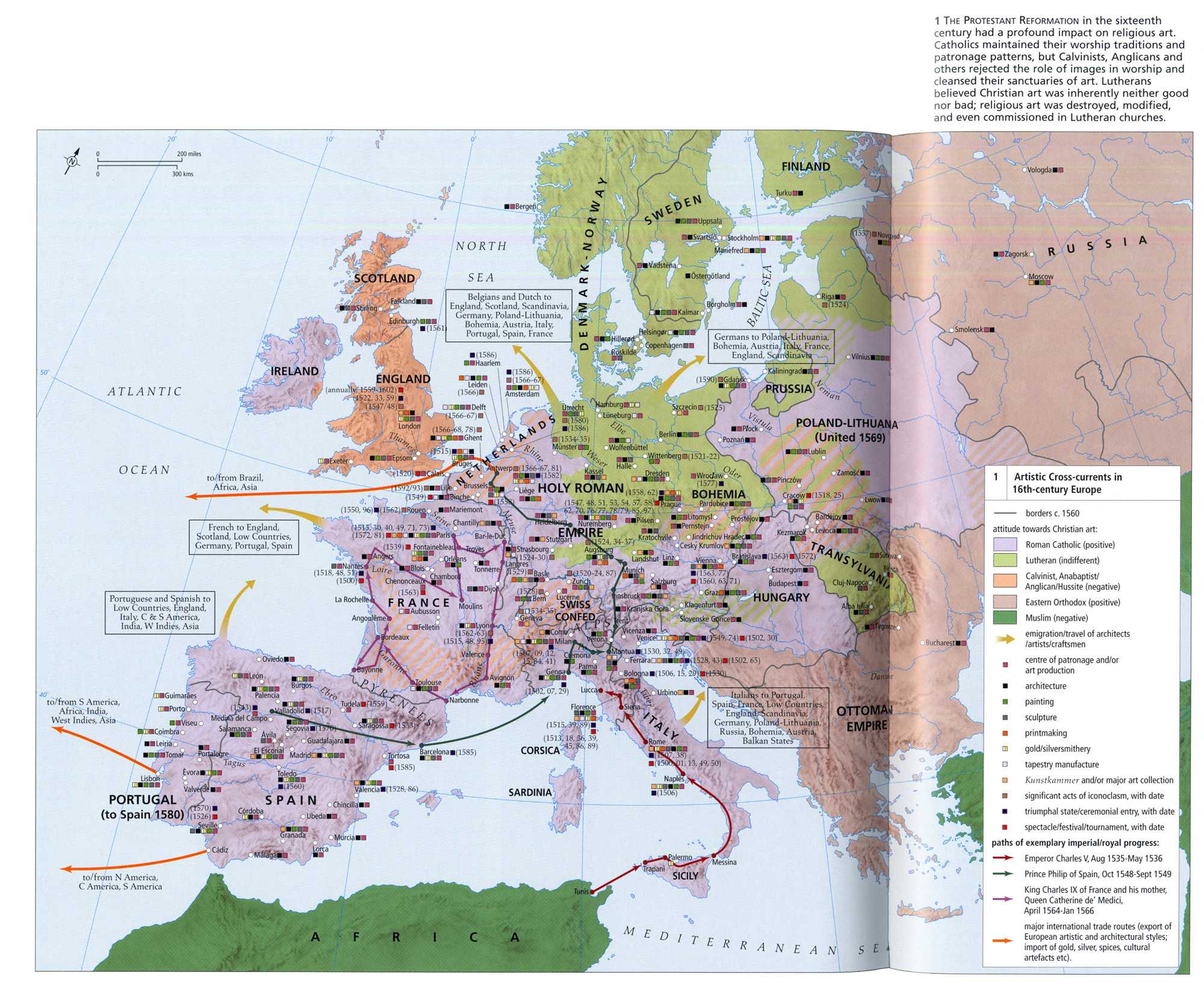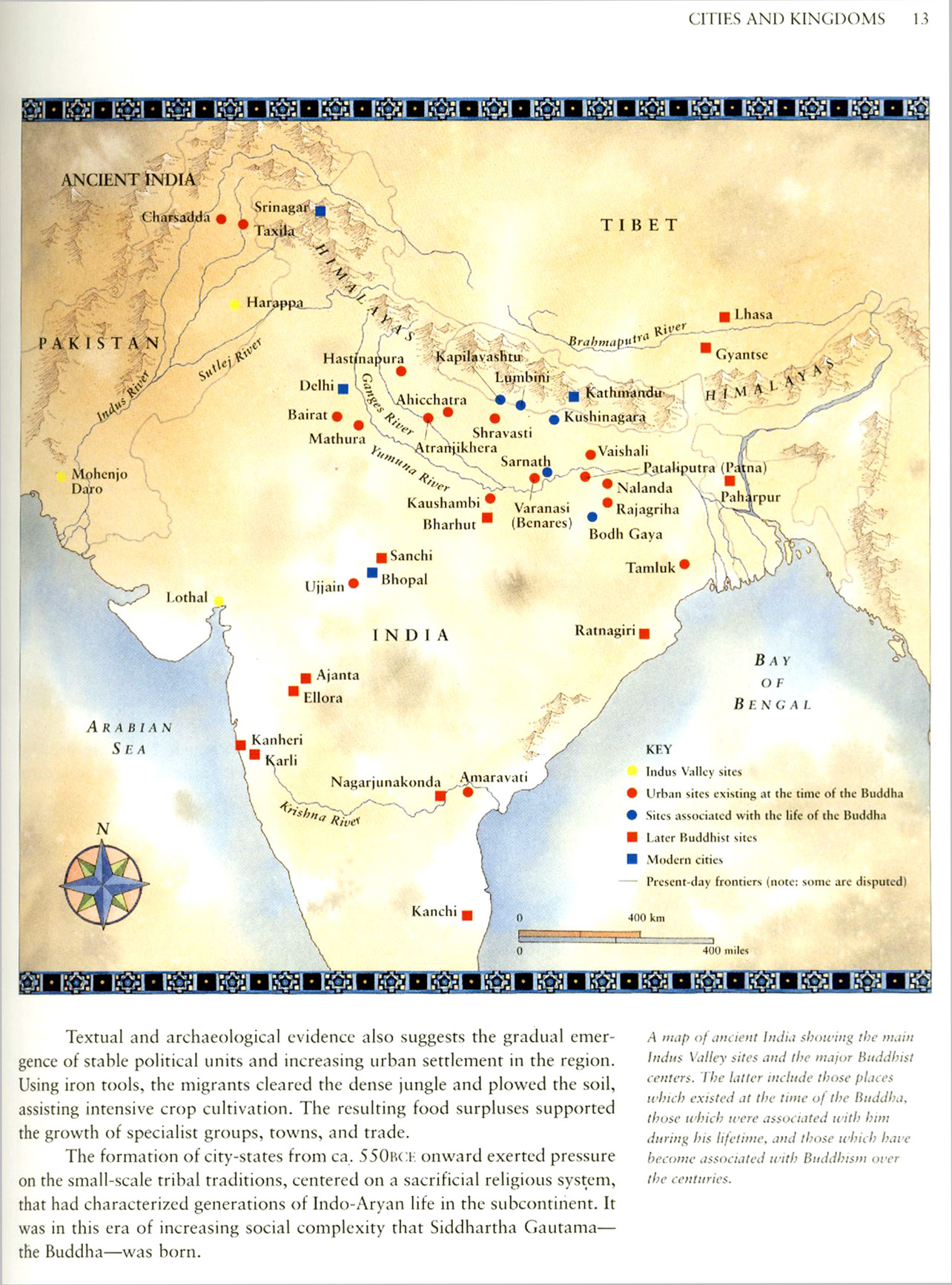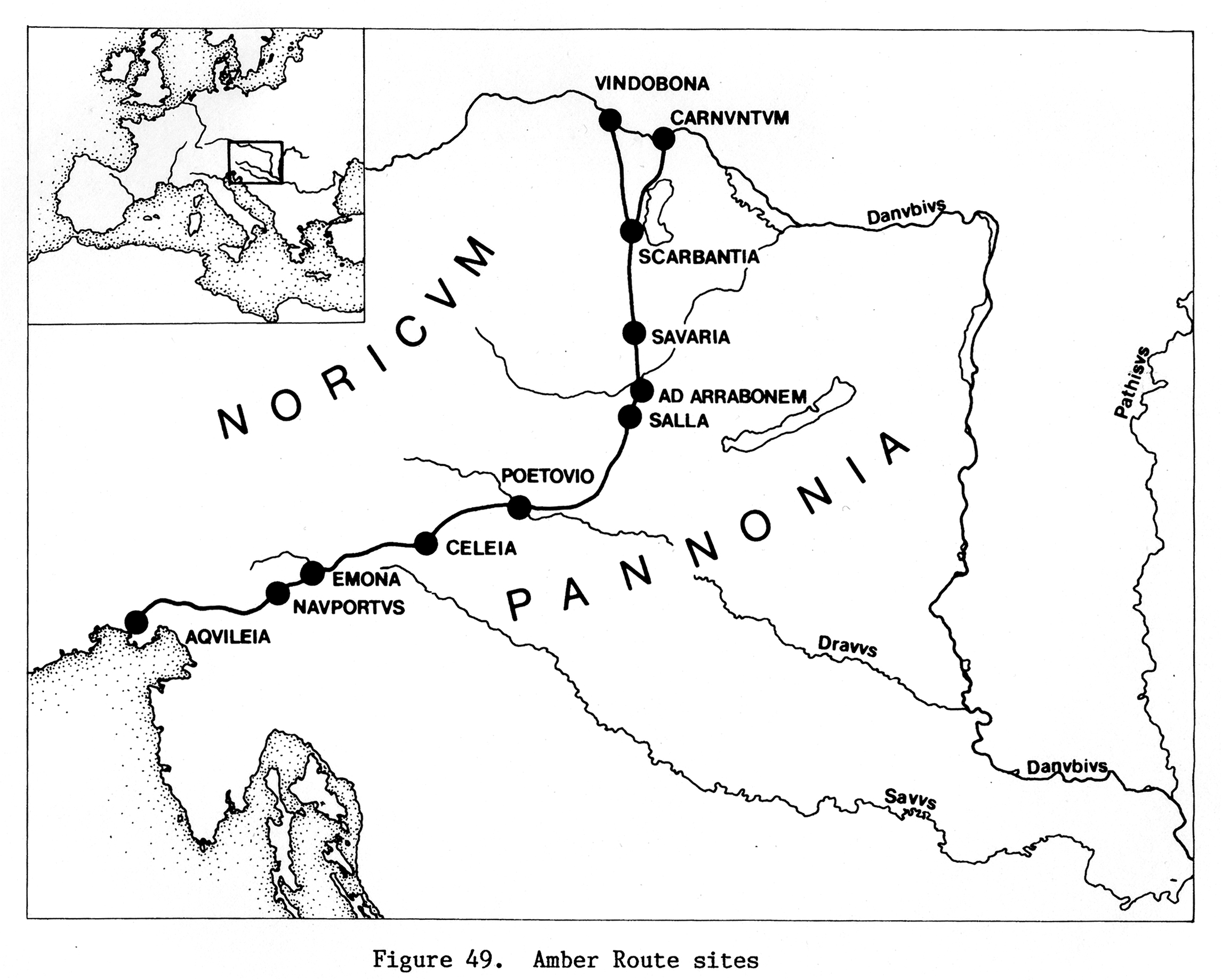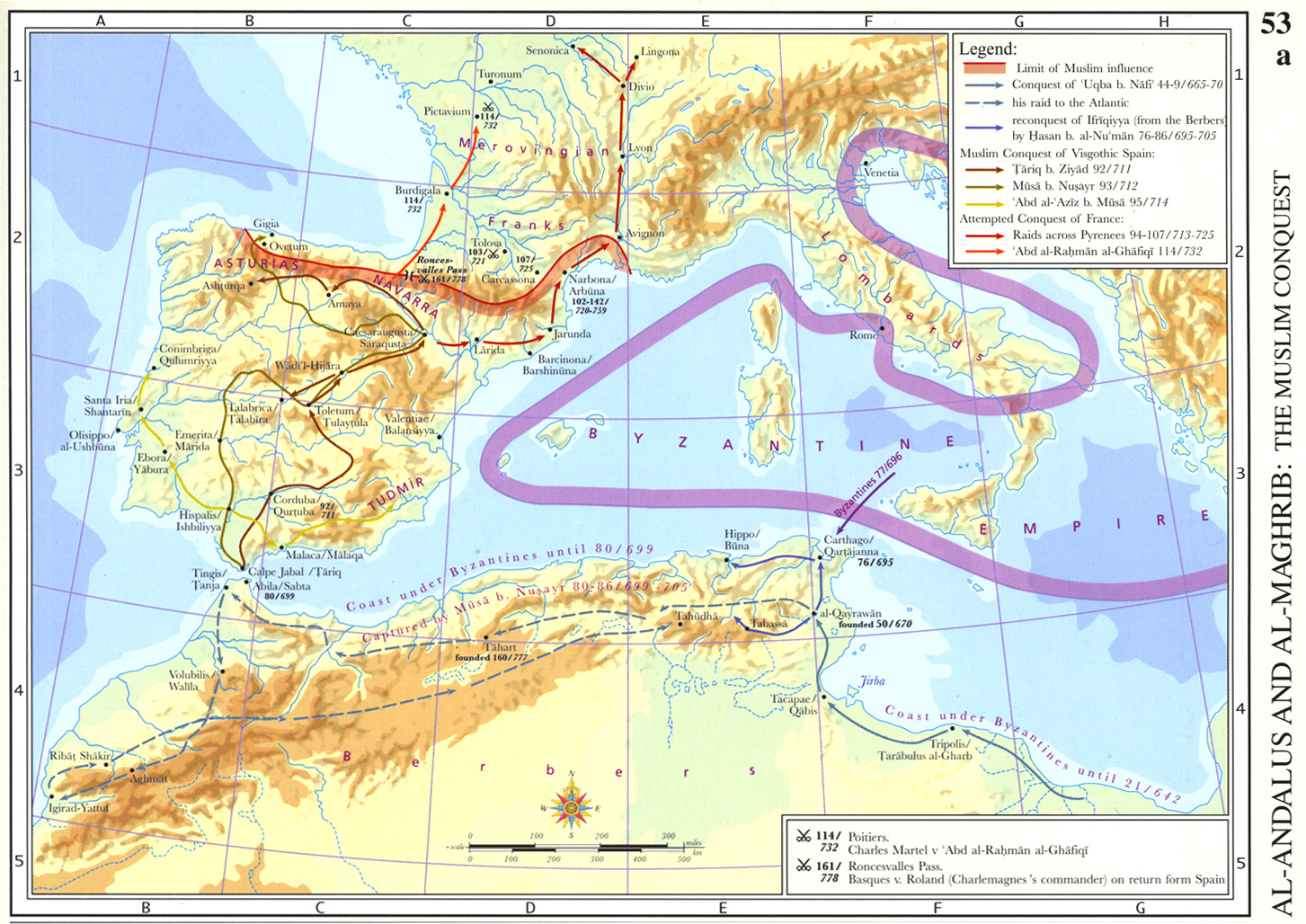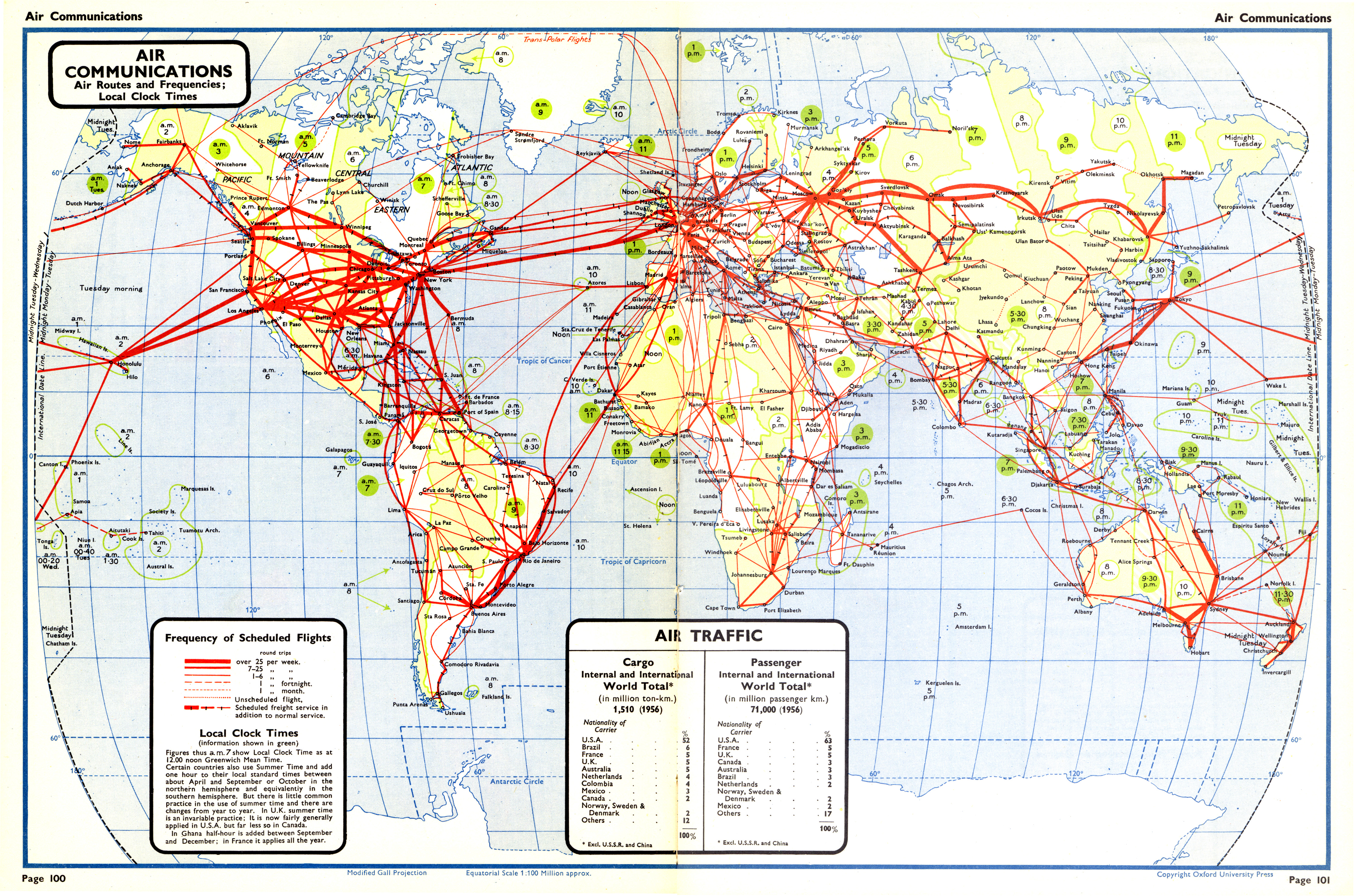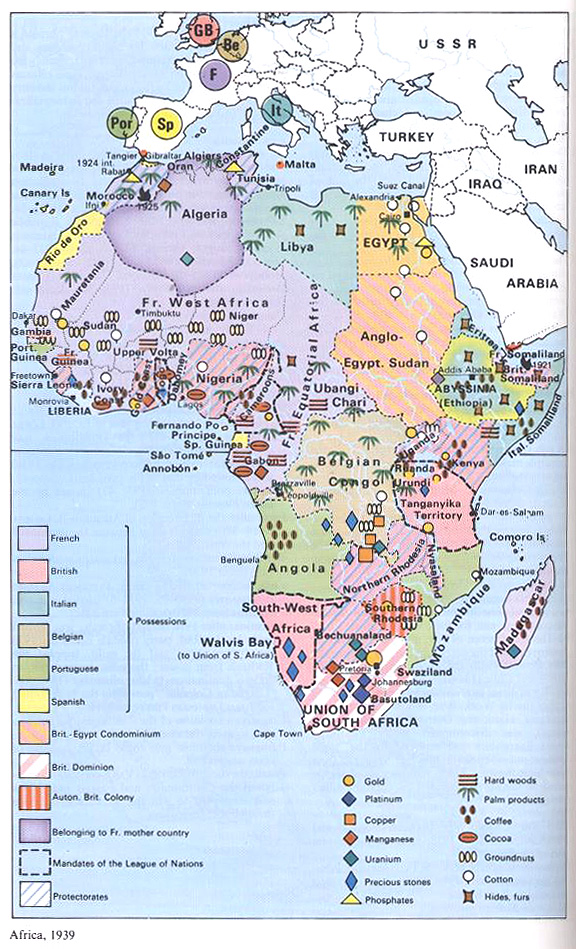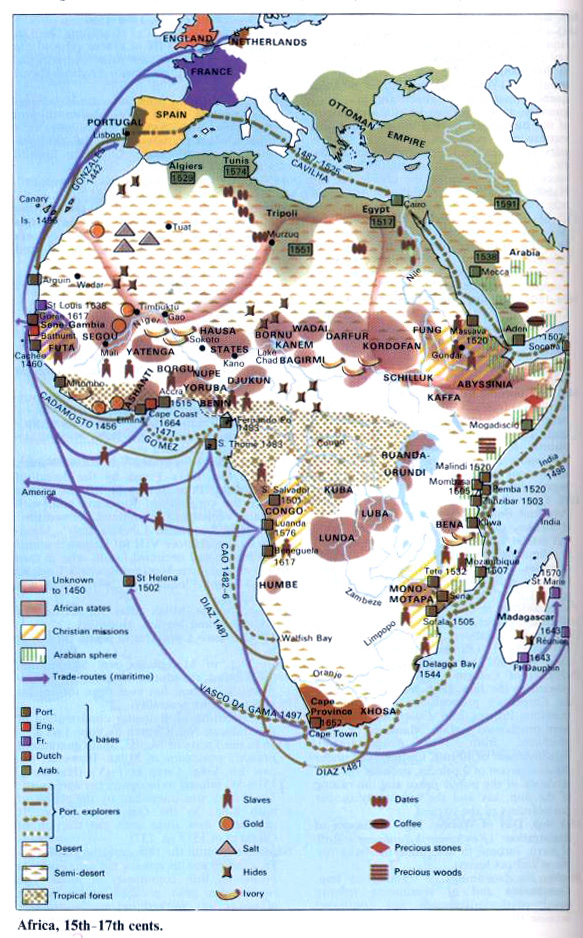Caption
British Conquest of India 1753 to 1890
Summary
This map displays the British colonization of India from 1753 to 1890. The regions of India have been color-coded according the year in which they were annexed by the British empire. The map also shows the Indian territories which were under Portuguese and French control, the areas most affected by the Indian mutiny of 1857, the cities in which there were major uprisings, the British military campaigns in the area, and the dependant and minor dependant states.
Source
Historical Atlas of the Islamic World (p. 100)
Copyright
Copyright © Oxford University Press, 2004
License
This map is used on this website by permission of Oxford University Press.
The license only allows it to be used in connection with SOC284 and WWS572B at Princeton University during the 2008-9 academic year.
The map appears in Malise Ruthven and Azim Nanji, Historical Atlas of the Islamic World (Oxford University Press, 2004).



